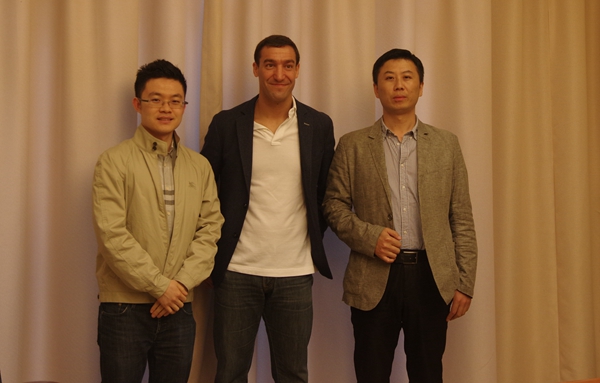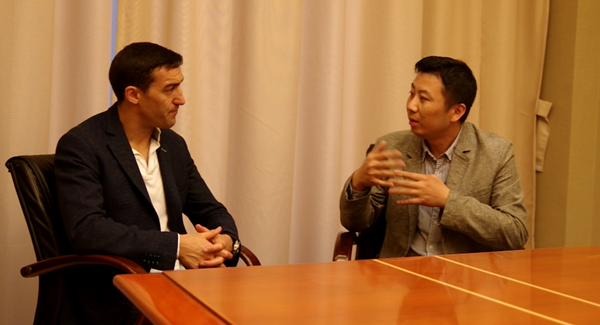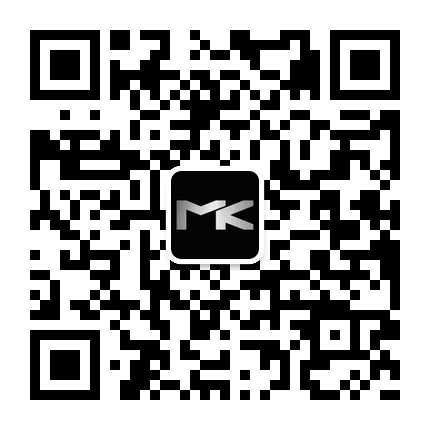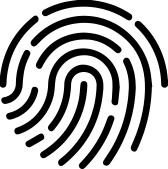David Atienza博士专访:适用性是可穿戴设备商业化关键所在
可穿戴设备应及时收集数据,切身考虑用户需求,只有这样,产业才能实现真正的商业化发展。
近日,由工业和信息化部人才交流中心主办,江北新区IC智慧谷顶山产业园协办的“芯动力”人才发展计划国际名家讲堂系列最新活动在南京浦口区举办。作为活动的全程支持媒体,镁客网受邀对本次讲座的专家导师瑞士洛桑联邦理工学院副教授David Atienza博士进行了一次专访。

左起:工信部IC Power产业合作组王喆、洛桑联邦理工学院David Atienza博士、镁客网主编王刚
David Atienza博士表示,在过去几年中,可穿戴设备的发展方向有所跑偏,因为这些设备研发商并没有实际的去测量或收取用户反馈数据,导致了产品的不适用性和无法给用户安全感。未来,我们的可穿戴设备应该与物联网紧密连接,并切身考虑用户需求,只有这样,产业才能实现真正的商业化发展。
以下是镁客网对David Atienza博士的专访实录:

镁客网:David 您好,我们了解到,您的研究主要是针对“高性能多处理器系统级芯片(MPSOC)和低功耗嵌入式系统的设计方法”的,包括针对2D和3D MPSoCs的新型热感知设计,以及针对无线人体传感器网络,动态内存管理和互连层次结构优化的设计方法和架构。可以请您先介绍一下您在可穿戴设备的功耗和系统优化方面取得了哪些最新的进展吗?
David:近期,我们已经在EPFL的嵌入式系统实验室(ESL)中取得了非常重要的进展了。首先,我们证明了近阈值多核心计算架构是更加节能的,它能使单核微控制器能够通过处理下一代智能型可穿戴设备的复杂生物信号,甚至可以在穿戴式系统中运行机器学习算法,而不用将所有数据发送到远程云计算系统中。此外,在ESL的系统层面,我们证明了压缩感应是可应用于基于ECG监测下的可穿戴设备的,它可以显著的节省我们在检测生物信号和采样所需要耗费的精力。
镁客网:对于可穿戴设备的商业化前景,您认为目前哪些方向的应用已经成熟或具有可预见的成熟市场环境?
David:我认为,在过去几年时间里,面向健康和消费者市场的大多数现有可穿戴设备的应用方向并不是很正确的,因为这些设备缺乏对用户的测量或用户提供的反馈数据及临床验证,这也是大多数不愿接受这些设备的原因之一。但我认为,这一领域的产品正在迅速朝健康、可靠、经认证的方向发展,在系统保障用户隐私和健康的前提下,面向健康和消费者市场的可穿戴设备是可具有成熟的市场的。
镁客网:我们一直在提“可穿戴设备”的概念,前几年这一类型的产品也大红大紫过,其中最为突出的就是“智能手环”。但是它们却迅速没落了,全球出货量大幅下滑,生厂商也大批倒闭或重组,您认为出现这种局面的原因有哪些?这其中除了它的实用性不足之外,当下这些产品在技术方面有哪些是急需改进的?
David:其实,当下可穿戴设备产业下滑的情况与我之前的预期是一致,以“智能手环”这一领域为例,大多数的产品是缺乏临床验证的,这使得很多用户对手环系统给出的数据持质疑态度,例如完成的步骤数量或每天消耗的热量等,这也是此类产品销售量不理想的重要原因之一。
不过,如果这些设备商可以很好的认识到这一点并对他们的产品进行改进的话,那么我认为这一领域还是很有发展潜力的。此外,用户界面方面,研发商应该多加考虑产品的适用和便捷性,并尽力使产品具备手机不可替代的功能,才有可能无让智能手环真正、稳定的商业化。
镁客网:那么,您认为可穿戴设备是有必要作为单独产品出现,还是作为日常用品的一个特性出现呢?
David:我认为,随着智能手机的普及,可穿戴设备是应该并将会成为我们日常生活所需的东西的,这只是一个时间问题。等到可穿戴设备拥有它们真正应该具备的功能时,人们就不会把它们当做一个“有趣的小工具”,而是将它们视为可提高我们生活质量的必备用品。
镁客网:您是怎样看待可穿戴设备和物联网之间的关系的?
David:可穿戴设备是物联网中的一个关键组成部分,对于我来说,它们就是物联网的基础,是接物联网和人类的第一个环节。因此,IoT设备的首次集成、交互是开始于具有可靠、舒适性的可穿戴设备的,进而才与其他IoT设备进行交互,最终让智能城市、智能建筑、工业4.0等成为现实。
镁客网:我们注意到,您在课题中特别提到了“特征提取,机器学习和数据记录”,那么您认为,目前可穿戴设备对数据分析的准确性如何?距离实际应用还要多久?
David:我要强调的是,可穿戴设备从概念的提出到现在取得可在运行时提取生物信号的复杂功能这一重大进展仅有几年的时间,因此,这是一个新的领域。而让可穿戴设备“聪明”起来是取决于真正适用的用户和应用场景的,例如,我们近期已经在ESL-EPFL中证实,在心血管监测中,将可能患有心律不齐疾病的病人的ECG(心电图)输入设备后,其识别的正确率可达到95-96%。因此,我认为这一新的可穿戴设备系列(包括机载机)正在快速准备就绪,以便在获得FDA(食品药品监督管理局)认证或CE标志(一种安全认证标志)后被普通用户使用。可以乐观地认为,这一领域的产品是可以在未来几年内在市场上全面铺开的。
另一方面,像脑电图分析这样的领域,其在开发嵌入式机器学习方面有着很多的难题,因此,只有通过与云计算服务相连接,才能在短期内让可穿戴设备可以在机器学习算法上运行起来,从而为可穿戴设备提供正确的指示。
镁客网:在您的设想中,终极的可穿戴设备应用场景,是怎样的?
David:在我看来,终极的可穿戴设备是真正“聪明”、可自主供电的,并且,它们应该是可适用于每一个人。此外,这些可穿戴设备应该可以给予用户足够的安全感。
所以,我所预计的终极的可穿戴设备在形态上可能就是一个简单的小贴纸,只要贴在皮肤上就可以直接与大脑沟通、交流,不需要我们输入一个字。虽然这对于在当下的技术研发人员来说是极具挑战的,但我相信在未来,这一定会成为现实。
附:(本次采访英文原稿)
1, Can you tell us something about the latest developments you have made in the power consumption and system optimization of wearable devices?
In my Embedded Systems Laboratory (ESL) at EPFL, we have made very important recent developments that prove that near-threshold multi-core computing architectures are more energy-efficient that single-core microcontrollers for complex bio-signal processing in next-generation smart wearable devices, and that they can be even used to run machine learning algorithms on-board in wearable systems instead of sending all the data to remote cloud computing systems (which requires a lot more energy than computing on-board actually). Also, at the system level at ESL we have been the first ones to demonstrate that compressive sensing can be used in ECG-based monitoring in wearables to dramatically reduce the energy spent in bio-signal sensing and sampling.
2, For the prospects of the commercialization of wearable device, do you think the current direction of the application have matured or have a predictable mature market environment?
I believe the application direction of most of current wearables in the last years (oriented towards wellness and consumer markets) is not the right application to make a difference, as these devices lack clinical validation on what they measure or provide as feedback to the user. Therefore, many people start being reluctant to accept them any longer, but I think this area of products is rapidly evolving towards truly health-reliable certified devices, and it will have a mature market environment in preventive (and personalized) healthcare if the systems are validated well and do not bother the user (i.e., we should not realize they are there).
3, We have been talking about the concept of "wearable equipment" and this kind of product also flourished a few years ago, one of the most popular is the "smart bracelet." But they are declining rapidly, the global shipments fell sharply and many manufacturers also closed down or went through reorganization. What makes this happen? Which point of this product is urgently needed to improve in addition to its lack of practical use?
This situation is very much aligned with my previous answer because “smart bracelet” are one clear example of wearables where the lack of validation has made many customers believe that the current systems are not reliable in what they indicate (e.g., amount of steps done or calories spent per day, etc.) so do not buy them anymore. Thus, this is one clear example where the real validation and adaptability of the devices, as these devices lack clinical validation on what they measure or provide as feedback to the user. Therefore, many people start being reluctant to use them any longer. However, I think this family of products will gain ground again if the devices are well tuned to be reliable. On the other hand, a key point that needs to be improved is the user interface, as it is one of the main limitations for a practical use (e.g., how are you going to write an e-mail or reply in an elaborated way to a message that somebody has sent you?). Until the smart bracelets (or smartwatches) are not able to remove the need for a phone completely, they will not reach a real stable commercial success.
4, Just continue, do you think that wearable devices should be used as a separate product, or as a feature of daily use?
I believe wearables should (and will) become a (normal) feature of our daily life, as the smartphone has done in the end. It is just a matter of time and finding the right features for them so that people do not see them as “funny gadgets” but rather elements that improve our quality of life.
5, What about the relationship between wearable devices and IoT?
Wearable devices are a key component in the idea of IoT because for me they are at the foundations of IoT. Indeed, they must create the first link between IoT and human beings by allowing the other connected things (not in contact with our bodies) to understand what we feel or need or want. So the first integration of IoT devices starts on having reliable (and comfortable) wearable devices that can interact with the other IoT devices to make smart cities, smart building or appealing Industry 4.0 environments (to mention a few) interacting with humans.
6, We note that you specifically mentioned the "feature extraction, machine learning and data records" in your subject, so I want to ask how accuracy the data analysis result of wearable device is and how long it can be practically adapted?
Note that it is already a major progress (only done in the couple of years) that wearables can run machine learning by extracting at run-time complex features from biological signals. So this is a new field to make wearable devices truly adaptive to the person wearing them (so “smart” overall) and the current accuracy that these devices can reach depends on the application. For instance, in cardiovascular monitoring, the possible ECG inputs can be identified as correct or having a possible arrhythmia in the order of 95-96%, as we have proved recently at ESL-EPFL. So this new family of wearable devices including on-board machine are getting ready fast to be use in the general audience (after passing the corresponding FDA or CE mark, depending on the market in US or Europe). So I am optimist that we can have them on the market in this area in the next couple of years. On the other hand, other areas like EEG analysis are having more difficulties to develop embedded machine learning, so wearables having this support will only be deployed in the short term (4-5 years in my view) by connecting them to cloud computing services, where these machine learning algorithms will be running on the background and providing the indications to the wearables to adapt to their results.
7, Can you describe how the ultimate wearable device application scene will be in your vision?
In my mind the ultimate wearable devices will need to be really smart, autonomous (do not need any battery) and able to adapt to each person. Moreover, they will not be disturbing us at all (so almost to the point of being almost “transparent”). Therefore, in my view they could (eventually) have the shape of a simple tiny sticker that we put on our skin and can interact with use by communicating directly with the brain without us pronouncing a word. I know this is really challenging (or essentially impossible) with our current technology, but I am confident that we will progress enough to make it happen in the future.
最后,记得关注微信公众号:镁客网(im2maker),更多干货在等你!
硬科技产业媒体
关注技术驱动创新
 可穿戴设备
可穿戴设备 
 微信ID:im2maker
微信ID:im2maker 长按识别二维码关注
长按识别二维码关注